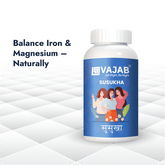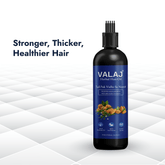Health & Economy • 8–10 min read • Updated: 25 Oct 2025
We often talk about anemia as a “health” problem. It is—yet it is also an economic problem that quietly reduces productivity, increases healthcare spending, and limits human capital formation over a lifetime. This post explains the channels through which anemia depresses growth, the scale of losses in practical terms, and how multi-level action—from homes to workplaces—can reverse the drain.
How Anemia Reduces GDP: The Main Channels
- Lower work capacity & productivity: Low hemoglobin impairs oxygen delivery to muscles and the brain, reducing physical endurance and cognitive performance.
- Higher absenteeism & presenteeism: More sick days, and days when people are present but underperform due to fatigue or breathlessness.
- Education penalties: In children and adolescents, anemia is linked with reduced attention, learning outcomes, and attendance—cutting into future earnings potential.
- Maternal & neonatal impacts: Complications during pregnancy increase medical costs and can affect infant development, shaping the future workforce’s capabilities.
- Healthcare costs: Recurrent clinic visits, complications, and comorbidities shift money from productive investment to treatment.
What the Numbers Say (Big Picture)
Estimates vary by method and year, but multiple analyses—global and Indian—have associated anemia and under-nutrition with fraction-of-a-percent to ~1%+ losses in GDP in affected countries. The message is consistent: even “small” percentage losses translate to large rupee values in a multi-trillion economy.
Example: If a ₹300 lakh crore economy loses even 0.5% due to anemia-related productivity and health costs, that is roughly ₹1.5 lakh crore of output foregone—every year.
Mechanics in Practice: A Simple Model for Employers
Consider a 1,000-employee manufacturing unit with average annual output value of ₹9 lakh per worker. If iron-deficiency anemia affects 25% of staff and reduces their effective productivity by a conservative 5%:
- Affected workers = 250
- Per affected worker annual loss = 5% × ₹9,00,000 = ₹45,000
- Total annual loss ≈ ₹1.125 crore
Now compare this with the cost of targeted screening (CBC + ferritin), nutrition counseling, iron-rich cafeteria menus, and evidence-based supplementation support. In many cases, the program pays for itself within the first year through fewer absences and higher output.
Where the Rupees Leak: A Quick Map
| Channel | What Happens | Economic Effect |
|---|---|---|
| Productivity | Reduced stamina, slower pace, more errors | Lower output per hour; missed deadlines |
| Absenteeism / Presenteeism | More sick days; “working tired” days | Less billable time; overtime costs rise |
| Education | Poor attention and exam performance | Lower skill base; future earnings depressed |
| Maternal & Newborn Health | Complications, low birth weight risks | Higher healthcare costs; long-run human capital loss |
| Healthcare Spending | Frequent visits, complications management | Public & private budgets diverted from investment |
Why Traditional Approaches Under-deliver
- Side effects & adherence: Iron tablets can cause nausea or constipation, leading to drop-off.
- Single-nutrient focus: Many people face combined shortfalls (iron + folate + B12 + vitamin C), so iron alone may not be enough.
- Program fragmentation: Screening, counseling, and follow-up are often not integrated with food services or HR policies.
What Actually Works: A Multi-Layer Playbook
1) Screen & Track
- Annual or biannual CBC + ferritin for women of reproductive age and other high-risk groups.
- Anonymous, dashboarded metrics for HR: prevalence, adherence, retest improvements.
2) Fix Food Environment
-
Iron-smart cafeteria: amaranth, spinach, moringa leaves, rajma/chana, sesame, jaggery, dates.
-
Leafy greens boost: Add fenugreek (methi), mustard greens (sarson), bathua, and drumstick leaves — all rich in plant-based iron and supportive for hemoglobin health.
-
(Optional – if allowed) Vitamin-C pairings (e.g., lemon with meals) may help improve absorption — but should be included only with physician/dietitian approval.
3) Evidence-based Supplementation & Counseling
- Physician-guided iron ± folate/B12 protocols for moderate to severe cases.
- Address side effects proactively (meal timing, gentler formulations).
- Behavior nudges: reminders, peer groups, and small incentives during the correction window.
4) Women-centric Support
- Menstrual health education; support for heavy bleeding and PCOS management pathways.
- Prenatal clinics & workplace tie-ups for expectant mothers.
5) Community & Policy Levers
- School-based screening and fortified mid-day meal enhancements.
- Alignment with public programs so workplace benefits continue at home.
Public Sector & Corporate ROI: Why It’s Worth It
When anemia prevalence drops, output per worker rises, medical costs fall, and school outcomes improve. For governments, that means higher tax buoyancy and fewer healthcare outlays; for companies, that means fewer disruptions and better margins. Many analyses suggest that anemia reduction programs have favorable benefit-cost ratios, particularly when screening and food environment changes are combined.
VAJAB’s Supportive Role (Optional Add-On)
VAJAB Healthcare supports organizations that adopt a food-first, clinician-guided approach to anemia reduction. As part of a broader plan, our gentle herbal formulation Susukha can be considered to support daily vitality and nutrient replenishment for adults, especially women.
- Pairs well with iron-smart meals and physician-directed supplementation
- Focuses on digestion and absorption support
- Intended as supportive nutrition, not a medical replacement
Explore Workplace Wellness with VAJAB
Looking to pilot an anemia-reduction program with screening, cafeteria tweaks, and supportive nutrition?
See SusukhaNote: Susukha is a nutritional support. Diagnosis and treatment decisions must be made by qualified clinicians.
Action Checklist (For HR & Admin)
- Baseline surveys: prevalence, absenteeism, and cafeteria audit
- Doctor-led screening: CBC + ferritin for at-risk cohorts
- Menu revamp + vitamin-C pairings; shift tea/coffee timing
- Supplementation + adherence nudges for those diagnosed
- Quarterly review of productivity, absences, and retest metrics






